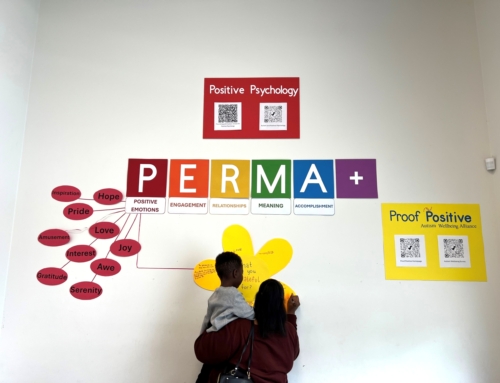
Jacob in his Halloween costume
By Shelley Ginsburg-Brown
Halloween can be a spooky time for all children, but it can be especially overwhelming for children with autism and sensory issues, like 8-year-old Jacob.
Jacob, a former Easterseals Southern California (ESSC) participant, has autism and ADD. According to his mom, Heather, Halloween was a tumultuous time for the family.
“When Jacob was younger, he was often frustrated with his costume,” Heather said.
According to Heather, Halloween caused her son anxiety when it came to noisy decorations and certain smells. She also said Jacob had issues with costumes and Halloween parties.
“We had to make adjustments,” Heather explained. “Now, we choose a costume for him months in advance, so he can wear it before and see if it scratches him or doesn’t feel right. If it does, we adjust. We still don’t go to parties much because it’s over-stimulation for him.”
According to Dr. Paula Pompa-Craven, Chief Clinical Officer of Autism Services at ESSC, Heather is making the right choice by planning. In fact, planning ahead and preparing to dress up is one of her tips for success to help families experience a stress-free Halloween.
“Some children can feel overwhelmed putting on costumes, especially those that include masks on their heads or faces,” Pompa-Craven said. “Allow your child to feel comfortable in their costume, let them practice wearing it at home for several days before Halloween festivities.”
This year, Jacob plans to dress up as Harry Potter; he has been wearing his costume around the house for months. Heather says since she began pre-planning and prepping Jacob before October 31st, Halloween has become a family favorite.
Some other recommendations that Pompa-Craven shared with L.A. Parent magazine include:
1. Explain the holiday. Tell stories and show pictures to help explain what will happen at school and on the evening of Halloween. This will help your child prepare for the scary costumes that they might see, home decorations they may encounter and how to trick-or-treat.
2. Schedule the fun. Use a calendar or visual schedule to help prepare for the unusual schedule for the day (class parade or party, early dinner, time to trick-or-treat) and practice these activities at home during the days leading up to the holiday.
3. Know your route. Plan a map of houses to visit that are close or familiar to your child. Scope out the decorations ahead of time so that you can avoid dark or decorated houses that might be too scary for your child.
4. Encourage involvement. Engage your child to assist with decorating your home, so they are comfortable with the changes and decorations
5. Share the spirit. Consider neighbors and friends whose children on the autism spectrum be coming to trick or treat at your home and think about how you can make the experience more comfortable for them. Offer a variety of treats or non-edible items to accommodate all tastes in your neighborhood.
These are all suggestions Heather follows in order to ensure her son has the best Halloween experience.
“Basically, if we’re going to cook or do anything for Halloween, we need to make sure it’s Jacob-friendly,” Heather said.








Leave A Comment